Heads up – Massive Sports Tech Holiday Deals List is Live!!! The Garmin Fenix 8 is $250 off (even the Fenix 8 Pro is $100 off!), the Apple Watch Ultra 3 is on sale, the Garmin inReach Mini 2 is $249, the GoPro Hero 13 Black, DJI NEO, and a ton of other brands/deals, including Wahoo, Oura, Whoop, Polar, Samsung, Google, and more than 100 sports tech deals here!
I’m DC RAINMAKER…

I swim, bike and run. Then, I come here and write about my adventures. It’s as simple as that. Most of the time. If you’re new around these parts, here’s the long version of my story.

You'll support the site, and get ad-free DCR! Plus, you'll be more awesome. Click above for all the details. Oh, and you can sign-up for the newsletter here!
Here’s how to save!
Wanna save some cash and support the site? These companies help support the site! With Backcountry.com or Competitive Cyclist with either the coupon code DCRAINMAKER for first time users saving 15% on applicable products.
You can also pick-up tons of gear at REI via these links, which is a long-time supporter as well:Alternatively, for everything else on the planet, simply buy your goods from Amazon via the link below and I get a tiny bit back as an Amazon Associate. No cost to you, easy as pie!
You can use the above link for any Amazon country and it (should) automatically redirect to your local Amazon site.
While I don't partner with many companies, there's a few that I love, and support the site. Full details!

Want to compare the features of each product, down to the nitty-gritty? No problem, the product comparison data is constantly updated with new products and new features added to old products!

Wanna create comparison chart graphs just like I do for GPS, heart rate, power meters and more? No problem, here's the platform I use - you can too!

Think my written reviews are deep? You should check out my videos. I take things to a whole new level of interactive depth!

Smart Trainers Buyers Guide: Looking at a smart trainer this winter? I cover all the units to buy (and avoid) for indoor training. The good, the bad, and the ugly.
-
Check out my weekly podcast - with DesFit, which is packed with both gadget and non-gadget goodness!

Get all your awesome DC Rainmaker gear here!
FAQ’s
I have built an extensive list of my most frequently asked questions. Below are the most popular.
- Do you have a privacy policy posted?
- Why haven’t you yet released a review for XYZ product you mentioned months ago?
- Will you test our product before release?
- Are you willing to review or test beta products?
- Which trainer should I buy?
- Which GPS watch should I buy?
- I’m headed to Paris – what do you recommend for training or sightseeing?
- I’m headed to Washington DC – what do you recommend for training?
- I’m from out of the country and will be visiting the US, what’s the best triathlon shop in city XYZ?
- What kind of camera do you use?
-
5 Easy Steps To The Site
In Depth Product Reviews
You probably stumbled upon here looking for a review of a sports gadget. If you’re trying to decide which unit to buy – check out my in-depth reviews section. Some reviews are over 60 pages long when printed out, with hundreds of photos! I aim to leave no stone unturned.
Read My Sports Gadget Recommendations.
Here’s my most recent GPS watch guide here, and cycling GPS computers here. Plus there are smart trainers here, all in these guides cover almost every category of sports gadgets out there. Looking for the equipment I use day-to-day? I also just put together my complete ‘Gear I Use’ equipment list, from swim to bike to run and everything in between (plus a few extra things). And to compliment that, here’s The Girl’s (my wife’s) list. Enjoy, and thanks for stopping by!
Have some fun in the travel section.
I travel a fair bit, both for work and for fun. Here’s a bunch of random trip reports and daily trip-logs that I’ve put together and posted. I’ve sorted it all by world geography, in an attempt to make it easy to figure out where I’ve been.
My Photography Gear: The Cameras/Drones/Action Cams I Use Daily
The most common question I receive outside of the “what’s the best GPS watch for me” variant, are photography-esq based. So in efforts to combat the amount of emails I need to sort through on a daily basis, I’ve complied this “My Photography Gear” post for your curious minds (including drones & action cams!)! It’s a nice break from the day-to-day sports-tech talk, and I hope you get something out of it!
The Swim/Bike/Run Gear I Use List
Many readers stumble into my website in search of information on the latest and greatest sports tech products. But at the end of the day, you might just be wondering “What does Ray use when not testing new products?”. So here is the most up to date list of products I like and fit the bill for me and my training needs best! DC Rainmaker 2024 swim, bike, run, and general gear list. But wait, are you a female and feel like these things might not apply to you? If that’s the case (but certainly not saying my choices aren’t good for women), and you just want to see a different gear junkies “picks”, check out The Girl’s Gear Guide too.


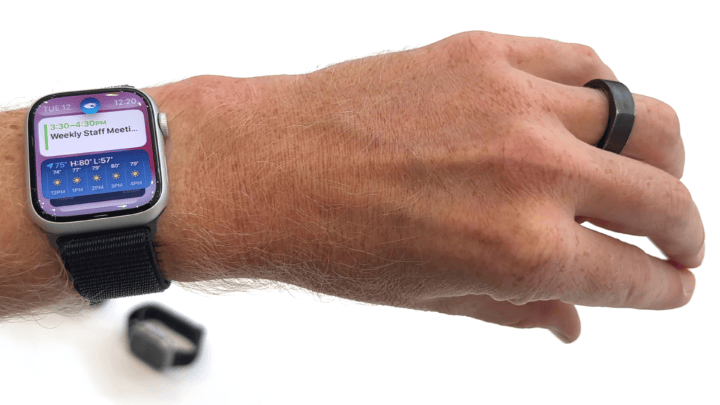
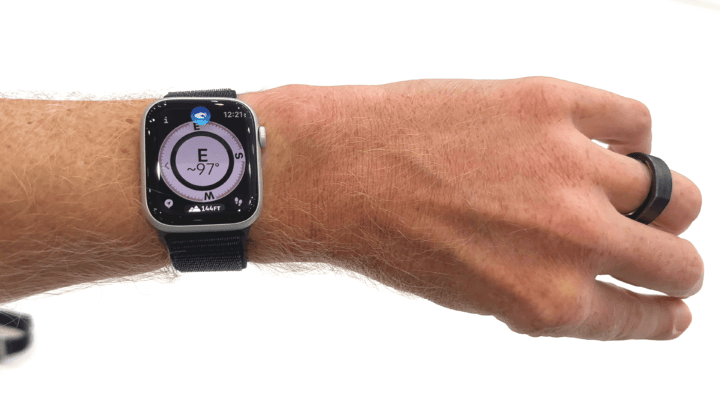
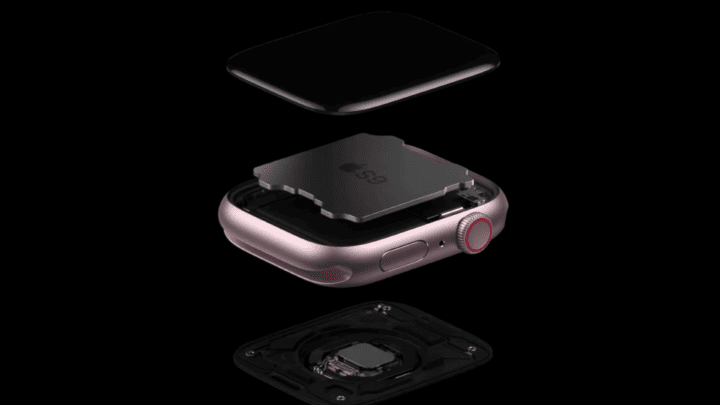
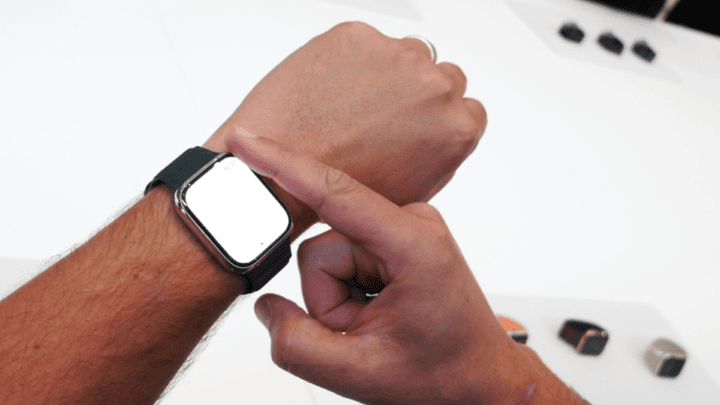
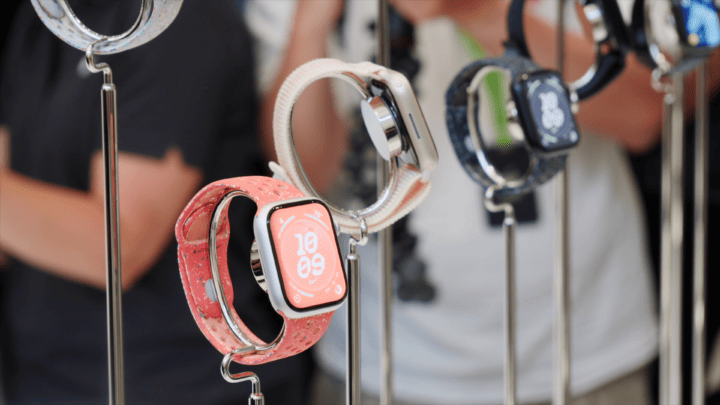
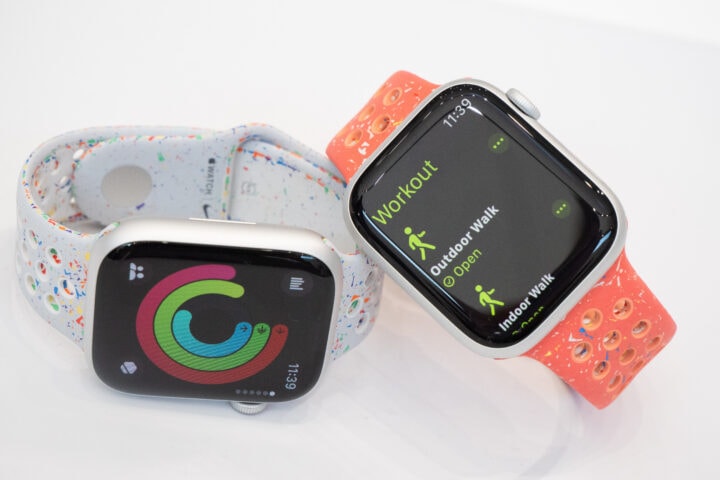
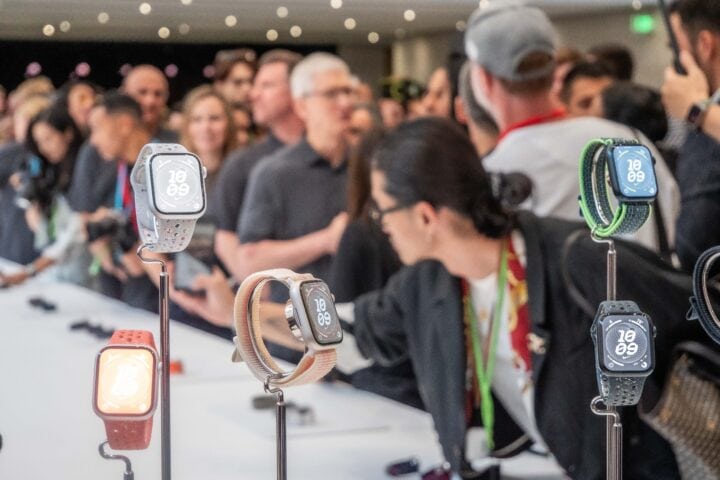
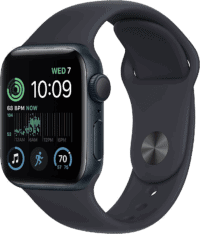

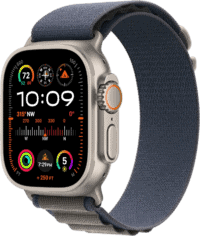
















Still no 1-sec HR and HRV monitoring?
HRV stress for me on Garmin is the most useful feature, as I can monitor how I recover during the day and squeeze another evening workout if I recovered well.
Are the topographic maps already also available for Europe? Or just only USA?
Unfortunately just some national parks in the US at the moment, IIRC. I suspect a lot more will come but it’ll take time.
When to change appearance. I’m waiting because I won’t buy this childish look. When will there be a masculine look :).
What do you it to have? A moustache?
Personally a rectangular watch is a dealbreaker to me, looks and feels too much like a toy, or a miniature cell phone. One of my favorite things about my Garmin is that when I’m wearing the watch throughout the day, it looks and feels like a traditional timepiece. So it would be nice if Apple also offered a round watch – although, I do understand that will 100% never happen.
I am beginning to reach a crossroads in my tech life. On the one hand, I am passionately against cultism in ANY part of my life, and Apple is clearly infected with that (by their own design). However, I’m also tired of waiting for anyone in the Wear OS world to take performance seriously. Apple seems to have set their sights on Garmin, doing everything they can to compete with them in terms of athletic performance. Google/Samsung seem to do nothing but treading water, expecting that third-party devs are going to lead the way. Google’s partnership with FitBit (for me, anyway) has been a complete disaster. Instead of taking the best of FitBit and making the Pixel Watch simply killer, they seem to be scared of making it too good and hurting FitBit sales, so they keep it as mediocre as they can. It’s simply amazing how many different pieces I have to get to play together nicely just to do a treadmill run with step-cadence and music through Bluetooth headphones, while using an app where I can truly customize the display for my workouts! Seriously, at least five different things from five different manufacturers/developers! If one of those pieces decides to not play nicely . . .
In a heartbeat, I would have an Apple Watch for their integration and performance. However, this would mean I have to switch to the iPhone and buy in 100% to their ecosystem. Not ready for that in any way but to admit that I’m even considering it is a massive jump for me. Please talk me off the ledge, Ray.
I think that if you overcome the misgivings you might just find that you’re relieved – because it genuinely all does just work.
I agree with that. I’m sitting here typing on a MacBook Air, with an iPhone, AirPods, and two AirTags in my pockets (cargo pants), and an AW Ultra on my wrist. Downstairs is my MacMini, a 13 year old MacPro, there are three HomePods in the house, two AppleTV’s. Everyone else in the house uses mostly Apple devices.
They all work very well together. Not perfect by any means, but usually everything just works Sometimes I have to coerce my AirPods to connect to the device I want connected (sometimes the “automatically connect to the device you’re paying attention to” works, sometimes not). Getting ready for my new iPhone using the Upgrade program, I turned on iCloud backup on my current iPhone only to have it not work for some reason. (It complains about “missing files” but I still have no clue why missing files would prevent a backup. I backed up instead to my MacBook. I have a week to figure it out.) But usually, everything just works. All of the photos I take with my iPhone, plus the few I add to my iPhotos library by other means (primarily Zwift, which I do on my iPad mini) can be viewed on all of my devices with screens almost immediately. In general, iCloud just works.
But that doesn’t mean Apple devices can do everything. I never use my Ultra for anything fitness related (you can’t prevent it from counting steps, you can prevent it from nagging you about it). I use Garmin devices for cycling, hiking, and cross country skiing. Garmin’s range is far more restricted, but it’s much better at what it does than Apple for that range.
I have both a Samsung Galaxy Phone and an iPhone 13 (from work). Both have their pros and cons. Certain things just work like a charm with iOS, no hazzle (though over the years, the „no hazzle“ aspect has started to get a little bumby with iOS too…). Android isn‘t always as hazzle-free because it must integrate with so many third party devices, softwares, ecc. whilst Apple can concentrate on harmonising their own soft- and hardware (or maybe that‘s just Android‘s excuse, I dunno…). But Android allows for more customisation then iOS, at least in the areas I’m interested in. So, take some, give some.
The Galaxy-Series has the better cameras, in my perspective. Seriously, when at work I need to make pictures in bad lighting, were it is imperative to zoom in in the picture and to recognise Details I can‘t get from the naked eye, all iPhones I’ve ever had were just not up to the task, far from it actualy. Even my old S10 still performs better then my iPhone 13… Sure, this is a very specific user-case scenario, but also when taking „normal“ pictures, my S10 beats the iPhone every time. Sometimes only by a bit, but most of the time by a lot.
But aside from the camera, the real thing that keeps me from buying iPhones is the closed ecosystem… (I‘m old enough to remember when Apple always criticized Microsoft for the very same thing they now do themselves. And actualy in a much larger scale than Microsoft ever did).
Sure, I can use many 3rd-Party accessories for iPhone too, but try using a Smartwatch with iPhone… Or Airtags, Airpods and other things without an iPhone (though, shame on you Samsung for doing the same thing with your Smarttags! Still waiting for a Tag that works at least across all Android-Devices, whitout the need of a 3rd-Party App).
So yeah, I don‘t like closed (or too closed) ecosystems. I‘ve been using iPhones for 9 years now and still everytime buy an new(ish) Android Phone (so far only Samsung Galaxy, tbh) when the older one dies from age.
But if you like the Apple ecosystem and don‘t mind the higher pricetag. Go for it. The Apple Watch is by far the best Smartwach there is, no doubt about it.
I for myself -even if I was fully into the Apple ecosystem- still wouldn‘t buy the Apple Watch though. Or any other Smartwatch in any other ecosystem for that matter. Just because so far, none has come close to the Sports-Metrics from Garmin and I because I’d hate to recharge my Watch all the time. But this is a personal preference. Others don‘t want the metrics and/or don‘t need the longer battery life.
Overcoming the misgivings is the difficult part. Thanks for the feedback, though. It is appreciated!
Thanks for the honest assessment. It’s good to hear that Apple, despite the hype, is NOT as close to Garmin as I might have been thinking. This helps.
Comment 10 was for Dave, comment 11 was for Paul. I didn’t realize they wouldn’t tag automatically.
Eni, thanks for the detailed assessment. We sound very similar. I’ve been working computers since before the PC and I also care a lot about the sports side of the watch, particularly HR and GPS accuracy. Your post helps a lot.
I’ll just pile on here too. As a Garmin user, I wish they would be more like Apple in pushing non-workout functions and interaction. As an Apple Watch user, I wish they would be more like Garmin in working better in an offline enviroment. And I wish there were better app stores for both.
the workout app is garbage compared what Garmin offers.
OK, I’m off the ledge. Thanks for all the feedback, everyone. What I truly wish for (and apparently, I’m far from being alone here) is for Garmin to simply add smartphone capabilities to their devices as they’ve already conquered the sport/performance side of things. No one has been able to explain to me why none of the Big 3 (Apple, Google, Samsung) can simply mimic what Garmin is doing, or why Garmin cannot simply add smartphone capabilities.
Often Garmin can’t because Apple won’t let them. For example, Apple doesn’t let third party devices send texts through an iPhone, or answer/make calls, both of which you can do on an Apple Watch.
I’ve often wondered whether Garmin’s reluctance to include LTE is due to the fact that they have Inreach, which works everywhere, not just where there’s cell service. Personally I’d guess that they’ll come out with high end watches (Fenix/Epix) which include Inreach radios before they include LTE. They control Inreach, and they don’t have to deal with the many cellular carriers that way.
Each is protecting their own market, and focusing on what they know they do best.
You can indeed answer an iPhone call on a Fenix. You just still have to talk through your phone to actually speak to anyone. InReach is great (I had a GPSMap 66i that I used for sea kayaking among other things), but it’s expensive and even the signup process requires a degree of user effort that is way beyond the satellite sos now included with iPhone in some countries.
I had been planning to replace my Garmin Vivoactive 3 with something like a Forerunner 965 this year, but heart issues led me to want Apple’s afib push notifications, so I ended up with the Apple Watch Ultra. The hardware is mostly excellent (although the wideband chip is surprisingly inept at paging the phone — very, very good at paging Airtagged items like keys though); but the software is something of a hot mess. At least Apple seems to be very rapidly improving the software, but the apps are fragmented, their fitness app is pretty useless and I’ve been using a third party app, Athlytic, to fill in the breach of determining whether I’m up to a workout or not and by how much. I think Garmin has the fitness thing much better thought out, between their handling of HRV and recovery data and Connect being available both on your phone and on the web, and expect they’ll make more of the Elevate 5 heart sensor in their latest Fenix and Epix Pro watches which brings them pretty much into line with Apple’s heart sensors on the hardware side. But the smartphone features in the Ultra are very nice; texting works beautifully, notifications work really well, taking phone calls without the phone is extremely helpful and has saved me on a number of occasions from missing important calls.
For me, though, I think part of why the Apple watch works is I have a Garmin head unit for cycling, so that particular gap in terms of recovery data and simply making more thorough use of power meter data, HR chest strap data etc. is effectively filled by the head unit. And with the heart trouble on the mend, I can’t necessarily rule out going back to Garmin in the future even if they dawdle on things like afib notifications. On the other hand Apple seems to be moving their Watch OS forward quite quickly with regard to fitness and it appears to be an easier platform for third party developers to support and that’s leading to a lot more apps. One thing I don’t expect Apple to touch Garmin on in the near future is battery life; every time Apple upgrades the processor in the watch, it seems they use the extra power efficiency to add another feature rather than extend battery life (the latest being the increased display brightness and the double-tap feature on the new S9-powered watches) and I think this is a problem for serious endurance pursuits; Garmin, by contrast, pull out the stops for endurance, even if it does mean less pretty and less smooth graphics resulting from their low processor clock speeds.
TimmyB,
I understand your frustration with current WearOS/Android wearable options. But, sheesh. There’s been ONE Pixel watch. The second generation isn’t even out yet.
Now, I don’t expect the 2nd gen to be an Apple Watch killer yet, but do give it some time.
Samsung isn’t worth talking about, IMHO; they’ve only gone deeper down the “We’re going to try and build a closed ecosystem on top of Android” rabbit hole these last 5 years.
My frustration is not with the hardware, it is with the lack of cohesion in the software, specifically the fitness/athletic side of the software. Google purchased FitBit, they have a great smartwatch in the Pixel with very good HR and GPS sensors, but they don’t want to make it “too” good because no one will buy the FitBit products when they can get all of it in the Pixel Watch. I have almost ZERO interest in the Pixel 2 (or 3 or 4…); this watch has enough power to do everything I want. Unfortunately, I have to make the watch (made by Google) work with a running app (made by a dev) and a music app (made by another dev) and a footpod (made by Zwift) and… Apple doesn’t have that problem. They actually put people into their software with a clear mission. There’s ZERO reason why Google can’t do the same, but they won’t. THAT is my frustration.
Why no coros pace 3 review????every other has dropped their review